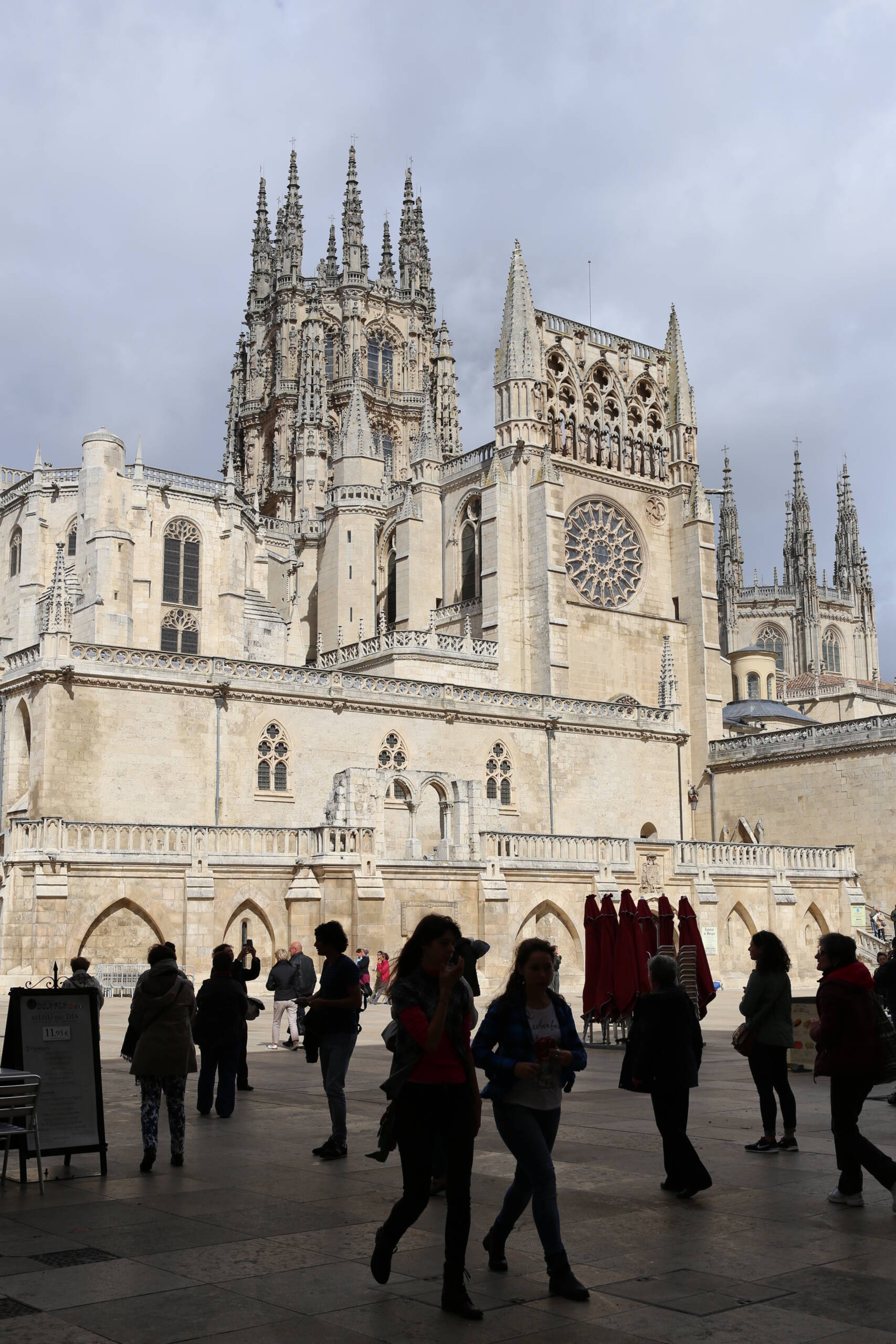There are places you arrive at expecting to be impressed, but Burgos Cathedral left me almost stunned in silence. The moment I stepped into the square and looked up, those spires seemed less like architecture and more like stone spun into lace, impossibly delicate yet towering with such power that the whole sky felt reshaped around them. Even on a day when the clouds hung heavy, the cathedral glowed—a pale, honey-colored stone catching what little light there was, as if it had stored centuries of sunlight and refused to give it back.

I lingered in the plaza outside, caught between two worlds. On one side, the cathedral, massive, unmovable, the kind of building that makes you think about how small you really are. On the other, the flow of everyday life—people crossing the square, tourists raising their phones for the perfect shot, couples slipping into cafés tucked against the edges, children darting ahead of their parents. At one point I stood near the café tables, watching the silhouette of people walking past me while the great rose window loomed above them. It struck me how this cathedral, begun in the 13th century, still stands as the backdrop for scenes that are utterly ordinary—ice cream melting too fast, a quick selfie, a hurried step because the rain is threatening.
And that’s the strange, wonderful thing about traveling through cities like Burgos. You come searching for history, for Gothic grandeur, for something that takes your breath away—and you find it. But you also find yourself grounded by the simple rhythm of the people around you. The cathedral may dominate the skyline, but it doesn’t eclipse daily life; it folds into it. Locals cut across the square without even looking up, as if it were nothing more than another building, while for me, every carving and pinnacle felt like a discovery.
Walking along the side, I traced the details with my eyes: saints, gargoyles, arches that seemed impossibly high. It made me think of the generations who built this—stonecutters who never saw it finished, pilgrims who passed by when its towers were still rising, priests who prayed here before electricity lit its windows at night. Inside, it’s another world—altarpieces gilded with gold, soaring vaults, chapels that seem like entire churches of their own—but even staying outside, I felt wrapped in something bigger than just architecture.
By the time I left the square, I realized I hadn’t just visited a cathedral, I had stepped into the living heart of Burgos. It’s a place where past and present meet so casually that you almost forget how extraordinary it is—until you stop, tilt your head back, and feel your breath catch again.
Leave a Reply